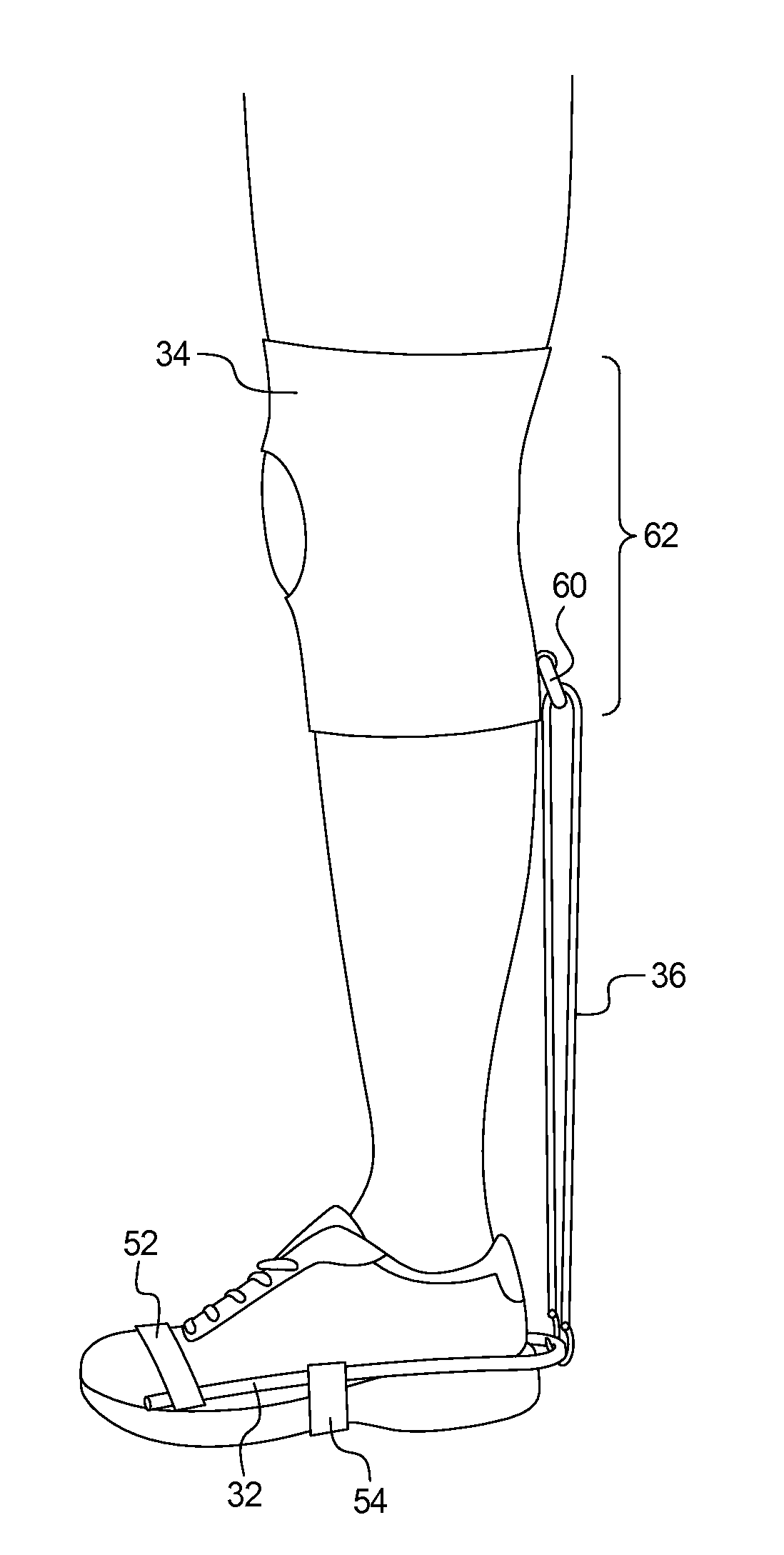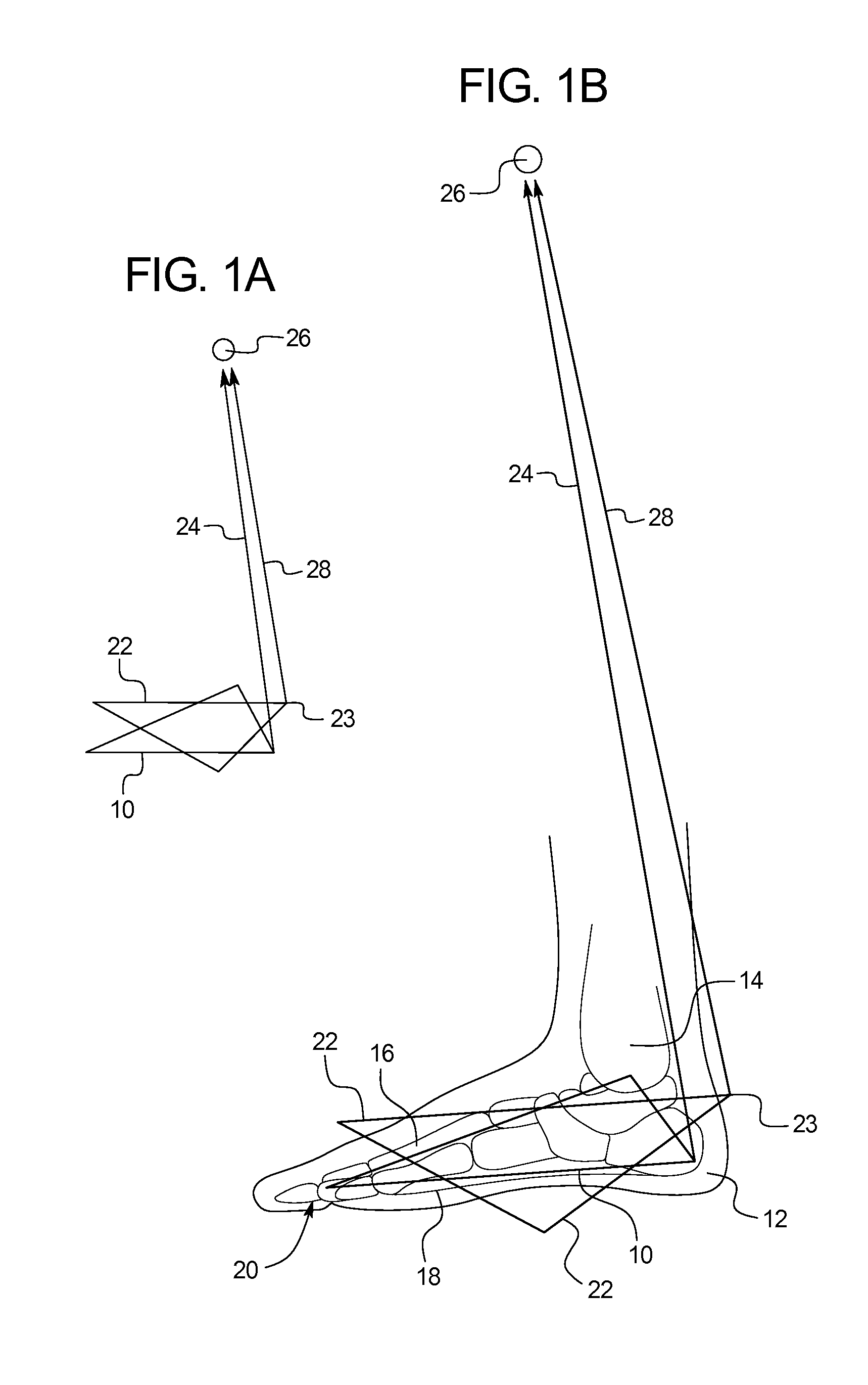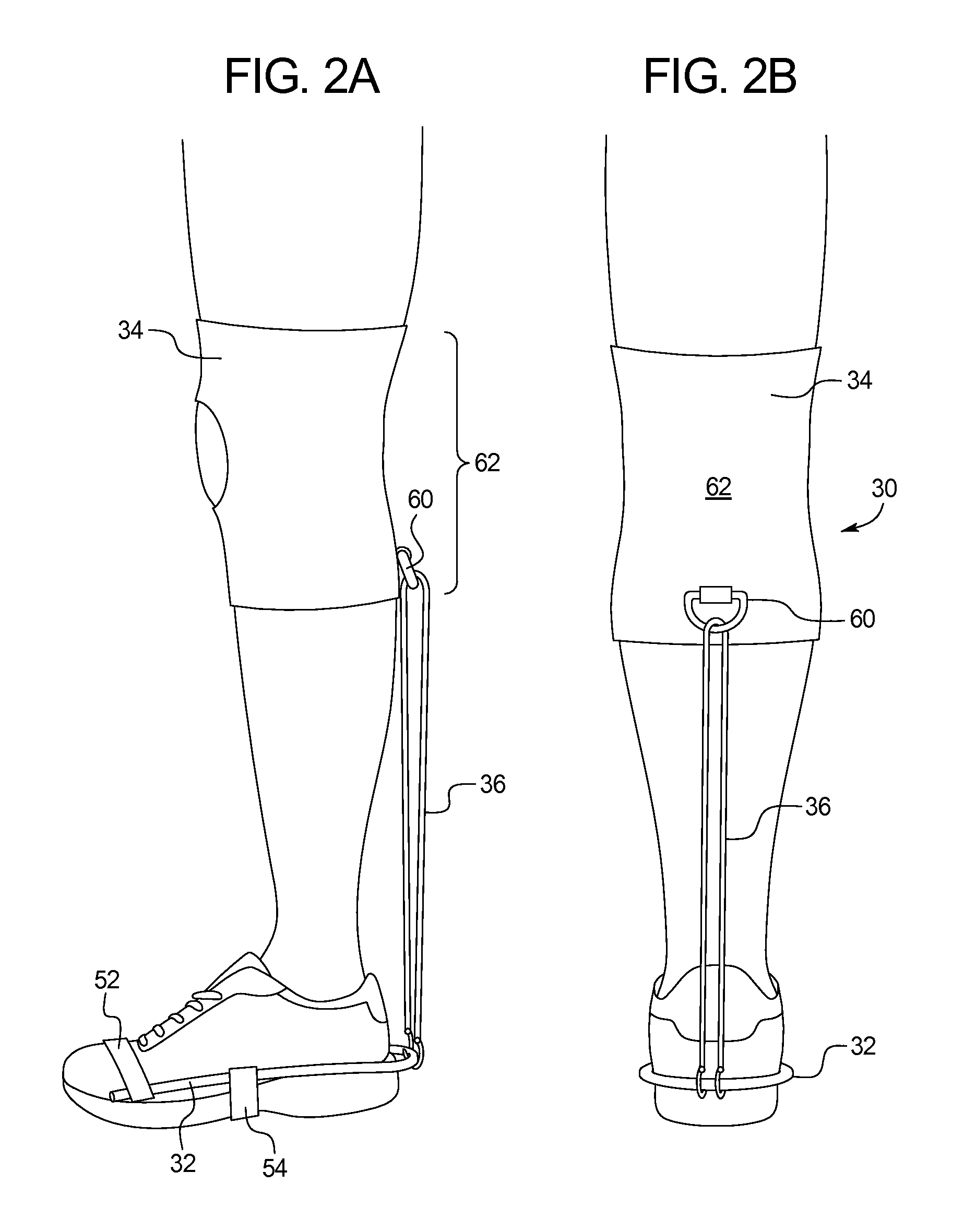Device for mitigating plantar fasciitis
a plantar fasciitis and device technology, applied in the field of orthotics, can solve the problems of high cost of orthotics, custom-made foot arch supports that fail to provide sufficient support for the plantar fascia, and plantar fasciitis leads to pain in the plantar fascia, so as to speed up the recovery process, reduce the risk of re-injury, and reduce the amount of work don
- Summary
- Abstract
- Description
- Claims
- Application Information
AI Technical Summary
Benefits of technology
Problems solved by technology
Method used
Image
Examples
Embodiment Construction
[0036]FIG. 1a is a force diagram that depicts a foot truss 10 of a user's foot. As depicted in FIG. 1b, the heel 12, ankle 14, and metatarsals 16 form the truss arch, while the plantar fascia 18, connecting the heel 12 to the head of the metatarsals 20, forms the base of the truss. The plantar fascia simulates a cable attached to the heel and metatarsophalangeal joints such that when the heel bone is pulled by the Achilles tendon during ambulation, the heel bone slightly rotates posteriorly and stretches the plantar fascia.
[0037]During ambulation, the foot truss 10 must tip over to enable a person to take a step forward. In order for the foot truss 10 to tip over, an increased translation force 24 must be applied to the heel end of the foot truss 10 until the heel lifts off the ground. The translation force 24 is applied to the heel end of the foot truss through the Achilles tendon to the knee joint 26. The translation force 24 increases the tension in the plantar fascia 18 until he...
PUM
 Login to View More
Login to View More Abstract
Description
Claims
Application Information
 Login to View More
Login to View More - R&D
- Intellectual Property
- Life Sciences
- Materials
- Tech Scout
- Unparalleled Data Quality
- Higher Quality Content
- 60% Fewer Hallucinations
Browse by: Latest US Patents, China's latest patents, Technical Efficacy Thesaurus, Application Domain, Technology Topic, Popular Technical Reports.
© 2025 PatSnap. All rights reserved.Legal|Privacy policy|Modern Slavery Act Transparency Statement|Sitemap|About US| Contact US: help@patsnap.com



